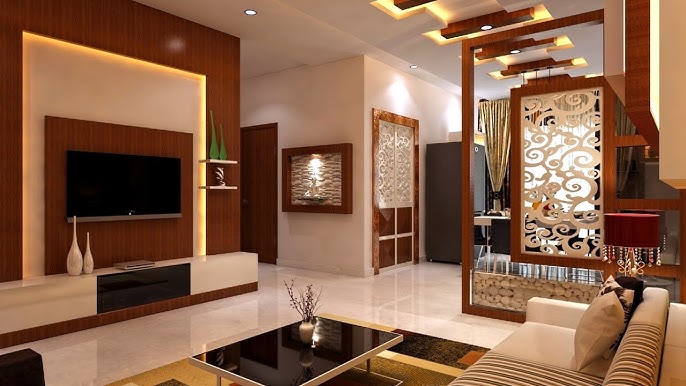Change Your Home With Essential Principles of Interior Decoration and Aesthetic Appeals
By comprehending the impact of color concept and the relevance of appearance and patterns, one can produce rooms that are not just visually appealing yet likewise deeply personal. Achieving this stability includes more than plain design; it encompasses a tactical arrangement and an eager understanding of how each component engages within an area.
Understanding Shade Concept
Recognizing the principles of shade theory enables developers to develop spaces that reverberate mentally with passengers while fulfilling functional demands. Each group plays an important function in developing harmony within an area.
The emotional influence of shades is profound; warm colors such as reds and oranges stimulate energy and warmth, while great tones like blues and greens advertise peace and tranquility. The use of corresponding colors enhances visual interest, producing striking contrasts that can raise an area's appeal.
Neutral colors, on the other hand, serve as a versatile backdrop, allowing other style aspects to radiate. It is necessary to consider factors such as lighting and the room's objective when choosing a color palette, as these can alter the perception of colors throughout the day.
Eventually, a well-considered color design can transform a space, fostering a feeling of comfort and style that aligns with the occupants' choices. Mastery of shade theory is, as a result, a crucial skill for any interior developer aiming to develop unified and welcoming atmospheres.
Achieving Equilibrium in Design
How can designers attain a feeling of equilibrium in their spaces? Attaining balance in style is fundamental to creating harmonious insides. Designers can utilize 3 main kinds of equilibrium: balanced, asymmetrical, and radial. Symmetrical equilibrium includes setting up aspects evenly around a main point, cultivating a feeling of order and harmony. This type often includes pairs of furniture or art work, enhancing aesthetic stability.
Unbalanced balance, on the various other hand, counts on varying elements that still accomplish a natural look. This strategy enables for even more vibrant and casual plans, giving rate of interest while keeping equilibrium. By very carefully selecting varying dimensions, colors, and structures, developers can create an aesthetically compelling area that really feels balanced yet energetic.
Radial equilibrium emphasizes a central focal factor with components radiating external. This design is commonly seen in round layouts, where furniture and decoration develop a cohesive surround that attracts the eye inward.
Eventually, attaining equilibrium requires thoughtful consideration of scale, percentage, and the partnerships between elements. Architecture Firm. By masterfully using these equilibrium concepts, developers can change rooms right into environments that feel both aesthetically pleasing and functionally harmonious, improving the total experience for owners
Importance of Spatial Awareness

An eager feeling of spatial recognition enables developers to recognize centerpieces within a space, assisting the audience's attention to vital attributes while preserving a general feeling of unity. It additionally assists in the tactical positioning of illumination, which can drastically affect the perception of area and mood. Furthermore, comprehending spatial relationships allows the designer to satisfy the certain needs of residents, making sure that each area offers its intended objective without compromising visual appeals.
Eventually, spatial understanding is critical for making the most of the potential of any kind of interior area. By meticulously taking into consideration the interaction in between dimensions, design, and function, developers can develop settings that not just fulfill functional requirements but additionally evoke a sense of comfort and beauty, improving the general living experience.
Integrating Texture and Patterns
Accepting a diverse series of textures and patterns can significantly enhance the visual and responsive charm of an indoor room. The strategic you could try this out use numerous materials-- such as timber, steel, material, and stone-- develops deepness and interest, making an area feel more welcoming and vibrant. For example, integrating smooth surface areas with harsh appearances can develop an equilibrium that attracts the eye and involves the senses.
When incorporating patterns, take into consideration both range and repetition. Huge patterns can serve as prime focus, while smaller sized, refined styles can complement various other aspects without overwhelming the area. Layering patterns, such as pairing floral pillows with striped throws, includes complexity and a sense of harmony if executed thoughtfully.
It is likewise important to preserve a natural color learn this here now scheme, making sure that structures and patterns collaborate instead of complete for interest. By choosing a couple of vital textures and patterns, you can develop a merged aesthetic that mirrors your personal design while boosting the total setting of the room. Ultimately, the careful unification of these aspects can change an ordinary area right into an innovative atmosphere rich with personality and warmth.
Individualizing Your Room
Developing an area that reflects your character is crucial to accomplishing a really welcoming setting. Personalization in indoor design allows you to infuse your one-of-a-kind style and passions into your home, transforming it from a simple shelter right into a refuge that talks with who you are. Begin by picking a shade palette that reverberates with your feelings-- strong tones can stimulate, while soft tones provide tranquility.
Integrate art work and design that reflect your enthusiasms, whether it be traveling, nature, or abstract concepts. Displaying individual collections, such as books, pictures, or mementos, can evoke valued memories and create centerpieces within a room. Furthermore, consider personalizing functional pieces, like upholstered furnishings, to align with your visual choices.

Final Thought
Finally, the improvement of a home via the necessary principles of interior layout and visual appeal requires a comprehensive understanding of color theory, balance, spatial recognition, appearance, and personalization. Each element contributes substantially to developing an unified and functional living setting - luxury interior design. By thoughtfully integrating these principles, individuals can improve the aesthetic charm and psychological vibration of their spaces, ultimately fostering a home that reflects distinct identities while offering comfort and practicality